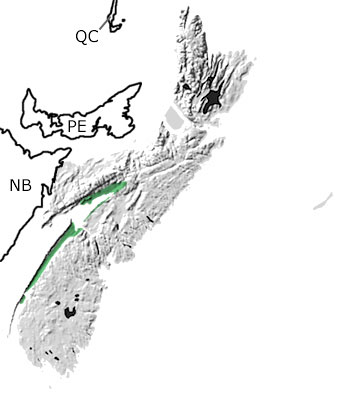Paleontology and geologyErosion removed rocks of Early to Middle Triassic age around Nova Scotia, but sedimentary and igneous rocks from the Late Triassic record events from this period. The supercontinent Pangea began to rift apart at this time. Great valleys opened up along earlier fault lines and braided streams and rivers flowed through these rift valleys, filling them with sediments eroded from the surrounding highlands. The climate was generally hot and dry. Red and gray conglomerates, sandstones, and siltstones deposited by rivers can be seen along the eastern shore of the Bay of Fundy. Some of these river deposits contain fragmentary remains of reptiles, mammal-like reptiles, and amphibians, including one beautiful skull of a procolophonid, an extinct reptile. Temporary lakes and mudflats formed and these deposits preserve tracks left by dinosaurs and other reptiles. In some areas, so much sand was deposited that dunes formed and several cliff areas show spectacular examples of fossil dunes, with large cross-beds in uniform red sandstones. |




